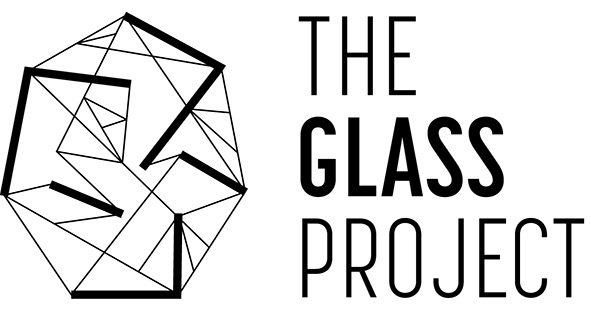Kuratiert von ALEKSANDRA ROTH-BELKOVA und LINA THEODOROU
...for english please see below
DAS ELEMENT DER VERÄNDERUNG ist die zweite Ausstellung, die "The Glass Project e.V." im Obdachlosen-Wohnhaus Lübecker Straße 6 organisiert, einem modernistischen viergeschossigen Gebäude in Berlin-Moabit.
Wir laden Künstler ein, neue Perspektiven und Ideen mit Glas als Medium ihrer Wahl zu entwickeln. Wir ermutigen die Künstler, verschiedene künstlerische Ausdrucksformen zu finden, die in spezifischer Weise mit dem Gebäude und seinen Bewohnern zusammenhängen. Das sind ortsspezifische Installationen und Skulpturen, aber auch Videos, Fotos, Klangwerke und Performances. Diese Interventionen verändern den Raum und die Wahrnehmung des Gebäudes und seiner Bewohner, durchbrechen einst starre Grenzen und verwandeln das Haus in ein Zentrum der Kreativität und der Kommunikation.
DAS ELEMENT DER VERÄNDERUNG setzt einen Ausstellungszyklus fort, den „The Glass Project e.V“. im Juni 2017 zum „Ortstermin 17“ an gleicher Stelle mit der Ausstellung „GlasGrenze“ startete. Ebenso wie DAS ELEMENT DER VERÄNDERUNG vereinte GlasGrenze etablierte internationale Künstler und obdachlose Bewohner in einer kreativen Gemeinschaft, die über einen Zeitraum von mehreren Wochen Kunstprojekte entwickelte. GlasGrenze verwendete dabei hauptsächlich Altglas wie Flaschen und andere Fundstücke. Ihre Arbeiten befassten sich material- und kontextbezogen mit Themen wie Konsum, Verschwendung und Ausgrenzung auf der einen und Wiederverwendung und Integration auf der anderen Seite.
Neben dem therapeutischen Wert der künstlerischen Arbeit und des Handwerks lag die Bedeutung des Projekts in der Förderung des eher marginalisierten Materials Glas in der zeitgenössischen Kunst. Glas weist eine hohe symbolische Qualität auf und ermöglicht über seine einzigartige Beschaffenheit ein breites Spektrum an Ausdrucksformen. Glas ist zerbrechlich und empfindlich, gleichzeitig kristallhart und stabil, ist sowohl beständig wie auch wandelbar und kann hervorragend genutzt werden, um menschliche Aggregatszustände in einer modernen städtischen Umwelt zu reflektieren.
Glas zeichnet sich durch die Eigenschaft aus, über seine Transparenz die Umwelt zu integrieren, über seine Beschaffenheit gleichzeitig jedoch auch ausgrenzen zu können. Es kann als schützende Hülle verstanden werden, genauso aber auch von der Außenwelt isolieren.
Eines unserer Hauptziele ist, die Wahrnehmung der Obdachlosen in der Gesellschaft zu verändern, in gleichem Maße aber auch den Blick der Obdachlosen auf dieselbe. Es hat sich gezeigt, dass die Öffentlichkeit das Projekt mit großer Begeisterung aufnimmt. Es war eine sehr positive Erfahrung für die Bewohner des Hauses, die während des Projektes nicht nur die Rolle des Schöpfers/Machers innehatten („Ich kann Kunst!“ Peter M., Hausbewohner), sondern auch als stolze Gastgeber auftraten und in gleichem Maße für die Besucher von „außen“. Es ist auf eine natürliche Art und Weise gelungen, ehemals separierte Kreise zu integrieren und eine neue soziale und kreative Gemeinschaft zu bilden.
Die aktive Förderung der Zusammenarbeit zwischen den Künstlerinnen und Künstlern, den Bewohnerinnen und Bewohnern des Obdachlosenhauses und der Moabiter Nachbarschaft durch Workshops, künstlerische Arbeiten und Aktionen war wesentlich für den Erfolg des Projektes.
Ausstellung 1 bis 3. Juni 2018 im Obdachlosen-Wohnhaus, Lübecker Str. 6, Berlin-Moabit.
Ausstellungseröffnung im Rahmen des Kunstfestivals ORTSTERMIN 18
/Kunstverein Tiergarten, Galerie Nord www.kunstverein-tiergarten.de
/Kunstverein Tiergarten, Galerie Nord www.kunstverein-tiergarten.de
Teilnehmende Künstler | Participating Artists:
The Element of Change
Curated by ALEKSANDRA ROTH-BELKOVA and LINA THEODOROU
For the second consecutive year we would like to organize an exhibition at the Obdachlosen Wohnhaus in Berlin-Moabit under the title "The element of change".
In this context, we invite artists to propose their own perspective and ideas. With glass as the main material and medium, they will make interventions and installations with works of sculpture, videos, photos, sounds and actions so that a gradual transformation of the space can take place, so that for the duration of the exhibition the building will function as a pole of creation and communication.
Last year, using mainly recycled glass, we handled various issues, such as turning the waste, useless objects and consumables into something useful either through the workshops or as the raw material for the production and creation of artistic works that we included in the exhibition.
Apart from the therapeutic value of artistic practice and handicraft in workshops, we believe that glass as a material has the qualities needed to express many other ideas on a symbolic level.
It is a material that is fragile, sensitive, supple, liquid and hard under special conditions, same as we could -in a metaphorical way- say for the human body in the modern urban environment.
Apart from excellent artistic results, the translucency of glass and its relation to light offers the ideal occasion to negotiate concepts such as the separation of public and private space, the need to illuminate traumatic aspects and issues not only at an individual psychological level, but also within sensitive social groups.
Glass can be interpreted as a shell, a "jar" as well as a space that may act as a shelter that protects but also simultaneously isolate from the outside world.
One of our main purposes is to try to change the pre-determined perceptions for the homeless and to attract the interest of the community, since through our previous experience we have seen that this was received with great enthusiasm by the public/audience. At the same time it was a very positive experience for the residents of the building, who not only took on the role of the creator/maker through during the workshops, but also participated in the proceedings of the exhibition.
What we consider essential for the project and plan to put special emphasis on, is the active encouragement of the collaboration among the artists on the one hand and the temporary or permanent residents of the building on the other, through workshops and artistic works and actions.
Die Ausstellung ist BARRIEREFREI.
This exhibition is ACCESSIBLE.
